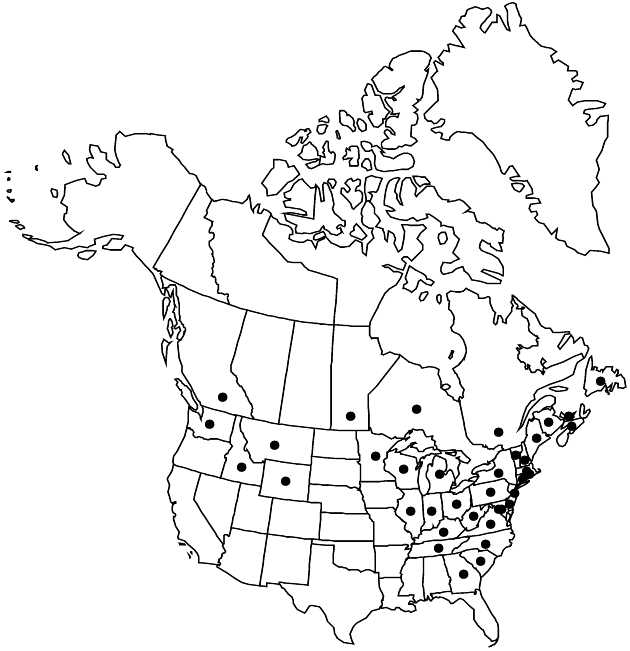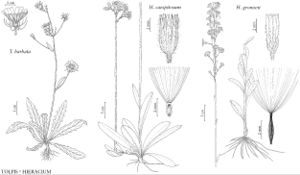Difference between revisions of "Hieracium caespitosum"
Fl. Belg., 62. 1827.
FNA>Volume Importer |
FNA>Volume Importer |
Revision as of 18:37, 24 September 2019
Plants 20–75 cm. Stems proximally piloso-hirsute (hairs 1–3+ mm) and stipitate-glandular, sometimes stellate-pubescent as well, distally piloso-hirsute (hairs 1–4+ mm), stellate-pubescent, and stipitate-glandular. Leaves: basal 3–8+, cauline 0–2(–5+); blades oblanceolate to lanceolate, 35–120(–180+) × 12–20+ mm, lengths 2–6(–10+) times widths, bases cuneate, margins entire or denticulate, apices rounded to acute, faces usually piloso-hirsute (hairs 1–3+ mm) and stellate-pubescent, sometimes glabrate. Heads 5–25+ in ± umbelliform or congested, corymbiform arrays. Peduncles piloso-hirsute (hairs 1–2.5 mm), stellate-pubescent, and stipitate-glandular. Calyculi: bractlets 5–8+. Involucres campanulate, 7.5–9 mm. Phyllaries 12–18+, apices acute to acuminate, abaxial faces piloso-hirsute (hairs 1–2.5+), stellate-pubescent, and stipitate-glandular. Florets 25–50+; corollas yellow, 8–12+ mm. Cypselae columnar, 1.5–1.8 mm; pappi of 25–30+, white bristles in 1 series, 4–5(–6) mm.
Phenology: Flowering May–Jul(–Aug).
Habitat: Disturbed sites, stream sides
Elevation: 10–300(–1500) m
Distribution

B.C., Man., N.B., Nfld. and Labr. (Nfld.), N.S., Ont., P.E.I., Que., Conn., Del., D.C., Ga., Idaho, Ill., Ind., Ky., Maine, Md., Mass., Mich., Minn., Mont., N.H., N.J., N.Y., N.C., Ohio, Pa., R.I., S.C., Tenn., Vt., Va., Wash., W.Va., Wis., Wyo., Europe.
Discussion
The type of Hieracium floribundum Wimmer & Grabowski probably resulted from a cross between plants of H. caespitosum and H. lactucella (P. D. Sell and C. West 1976).
Selected References
None.
